Time stops in these old-world villages in Surrey
YS Life lists the top villages in Surrey one must visit to take a trip back in time, and live the simple life in today’s ever-busy times.
When I first told my father that the family was going to Surrey for the summer, he gave a knowledgeable nod. Surrey is synonymous with cricket to most Indians. Teams representing the county have been recorded from 1709 onwards, and as many as 40 Indian cricketers have played county cricket in England--from Tiger Pataudi (Sussex), and Farokh Engineer (Lancashire), to Sunil Gavaskar (Somerset), Sachin Tendulkar (Yorkshire), Rahul Dravid (Kent), and Anil Kumble (Surrey).
But I’m not in it for the cricket, and begin drawing up itineraries for slow travel through Surrey.
Located in the South-East of England, Surrey is bordered by Greater London to the north, Kent to the west, Sussex and Hampshire to the south, and Berkshire to the west. The county is divided by the chalk ridge of the North Downs, which runs east to west, and is pierced by the Wey and Mole rivers, tributaries of the Thames.
The UK’s most wooded county is renowned for its rolling hills, sinking valleys, meandering waterways, and ancient heathland. Vibrant towns and sleepy villages–all surrounded by the bucolic countryside, including the scenic Surrey Hills Area of Outstanding Natural Beauty – ensure there’s never a dull day.
Katie McDonald, Countryside Manager, Surrey County Council, calls the Surrey countryside “magical”.
“We look after 10,000 acres of countryside, equivalent to 20,000 football pitches. Within Surrey, we have a variety of landscapes and habitats that contribute to biodiversity…ancient woodlands, our treasured chalklands, downland, heathland, and waterways. We also have ancient monuments and historic towers,” McDonald tells YS Life.
More than 2,000 miles of public paths are spread across the county, and people can explore the place at leisure–on foot, cycles, or horses.
The name Surrey has its origins in the Saxon term ‘Suthrige’, or ‘southern kingdom’, and the county’s heritage goes back thousands of years.
I get a quick history lesson when standing in a long line to order drinks at a pub in Epsom, a town that began life as an Anglo-Saxon settlement in the late 6th century. It became a popular spa and leisure destination in the Georgian era, after the discovery of the eponymous magnesium-rich salts.
“Surrey’s past goes back to the Romans, who during their occupation created Stane Street, a major road that connected Chichester with London. The Saxons came to Surrey in the 5th and 6th centuries, and left behind their tribe names in the names of places such as Woking and Godalming,” William Golding tells me.
I learn that it was after the Norman conquest that William de Warenne was given the title Earl of Surrey, following which the Guildford and Farnham castles were built.
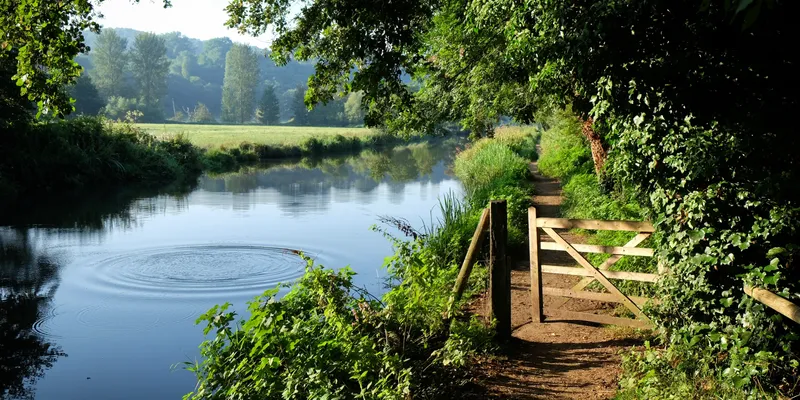
Surrey has more than 2,000 miles of public paths, and people can explore the place at leisure–on foot, cycles, or horses.
Surrey’s economy was largely rural, revolving mainly around the woollen cloth industry. A new industrial era began in the 17th century with the opening of the Wey Navigation, one of the country’s first canal systems.
The county, which now has a population of approximately 1.1 million people, is said to be one of the most affluent ones in the UK and home to some of the best schools. The largest town is Woking, followed by Guildford and Walton-on-Thames.
Despite all that, Surrey has been branded “uninspiring” and “dull” by a popular travel guide, a fact that continues to irk locals.
Christine Charlesworth, who specialises in figurative and portrait sculpture and is known for her sculptures of suffragettes Emily Davison and Dame Ethel Smyth, believes “nothing could be farther than the truth”.
Charlesworth lives in Milford, a village near Godalming, that was in 2022 revealed by a survey as one of the most sought-after locations to live in the UK. The village, which finds mention in Aldous Huxley's Brave New World, is typical of the English village – with a church, a couple of pubs and chippies (fish-and-chips shops), grocer, butcher, fishmonger, and large green areas.
Surrey has many old market towns and straight-out-of-a-storybook villages, all steeped in history and run through with cobbled streets. Over the next few weeks, I meander across many of these.
From Epsom, on to nearby Guildford, the largest town in the county; then to Farnham, replete with Georgian streets and historic architecture; Godalming, one of the first towns in the world that used electricity to power street lights; and the picture-perfect Kingston-upon Thames, home to a vibrant market for more than 800 years.
There’s plenty to do in the towns, but it’s in the leafy, expansive villages – some of the most beautiful and picturesque in the UK – that the Surrey countryside really comes alive. The village greens, local stores, small cottages, and the central pub are the heart of the community, and seem to have been untouched by time.
YS Life lists the top villages in Surrey one must visit to take a trip back in time, and live the simple life in today’s ever-busy times.
Abinger Common
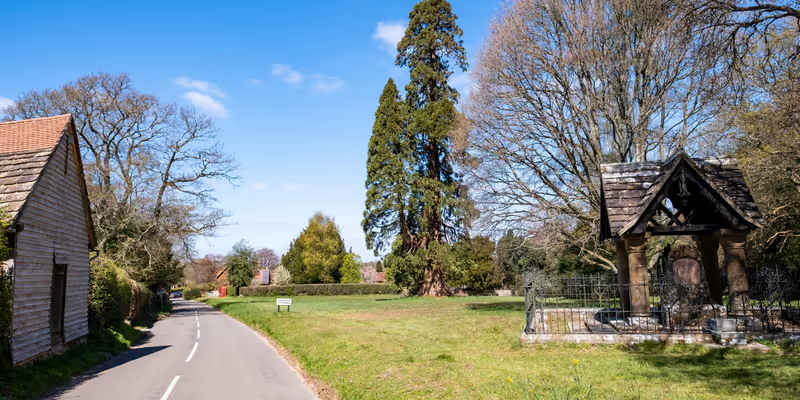
Set amid beautiful woodlands, Abinger Common is ideal for those looking for a digital detox.
Winterline, a rare phenomenon that makes Mussoorie the perfect winter destination
This small village, located about five miles south-west of Dorking, is said to be the oldest village in England. Remains of a Mesolithic dwelling were discovered in the 1950s on the grounds of the manor house, and are considered to be one of the finest examples of a Middle Stone Age settlement in Europe.
Goddards, a large country house built by acclaimed architect Edwin Lutyens, has a garden laid out by designer and horticulturist Gertrude Jekyll and houses the headquarters of the Lutyens Trust. Lutyens, also designed Abinger Common War Memorial, is a WWI memorial that was destroyed by a German bomb during WW-II and rebuilt in the late 1940s.
Not far from the village is Oxmoor Copse, an area of outstanding natural beauty. A trip to this historic village can’t be complete without dropping in at Abinger Hatch, a family-run country pub nestled amid beautiful woodlands and offering the chance of long walks.
Cranleigh
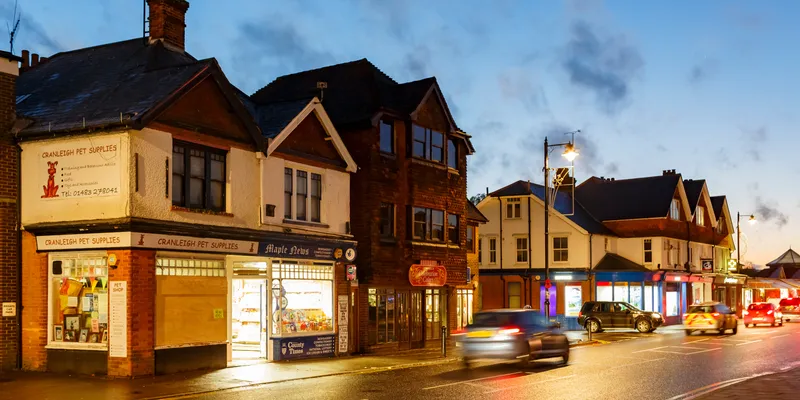
Situated in the Surrey Hills, Cranleigh is home to numerous visitor attractions.
One of the largest villages in the UK, Cranleigh is located in the borough of Waverley, and is best known for its access to the Surrey Hills, a flourishing art scene, and a high street with numerous indie cafes, restaurants, and stores.
Guildford’s most famous resident, Lewis Carroll, is supposed to have taken inspiration from a gargoyle in St Nicholas Church, built in 1170, to create the Cheshire Cat in Alice in Wonderland.
The village has a packed calendar round the year. Cranleigh Arts offers live music, comedy, film nights, and theatre, and there are other events such as Summer Carnival, Classic Car Show, Surrey Hills Wood Fair, and Cranleigh Bonfire and Fireworks Night.
The self-guided Cranleigh Heritage Walking Trail (it uses QR codes that can be found on the high street) is the best way to discover the history of the village.
Fountain Square, which has been created around a large stone drinking fountain that dates to 1874 and is adorned with the figure of a crane (which supposedly lent the village its name), is the ideal place to sit and watch the world go by.
Shere
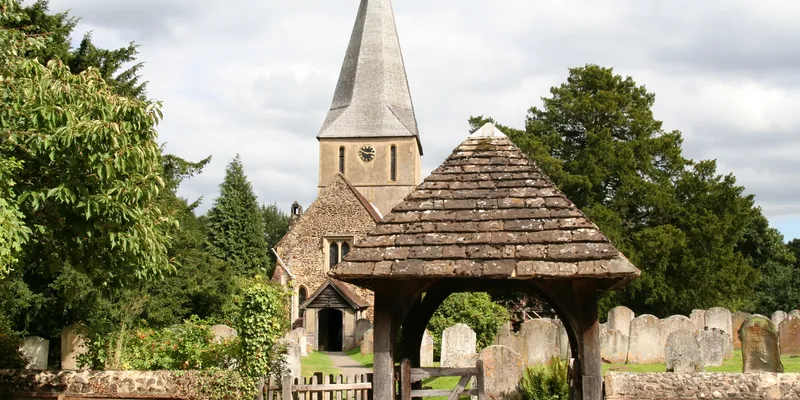
One of the UK's most beautiful villages, Shere has been seen in movies like The Holiday.
Located between the towns of Guildford and Dorking, Shere, mentioned as Essira in the Domesday Book of 1086, is the quintessential English village with a 12th century church, a small museum, charming houses, a tea room, two pubs, and a stream with ducks.
Surrounded by gorgeous scenery, it’s close to lovely natural sites such as Newlands Corner and the Silent Pool. The picture-perfectness of the village has led it to be used as a popular filming location in The Holiday, Bridget Jones’s Diary, and The Edge of Reason.
Shere draws many painters keen to translate the natural beauty on to paper, particularly the striking parish church that is dedicated to St James and was built in 1190 in the early English style.
Brockham
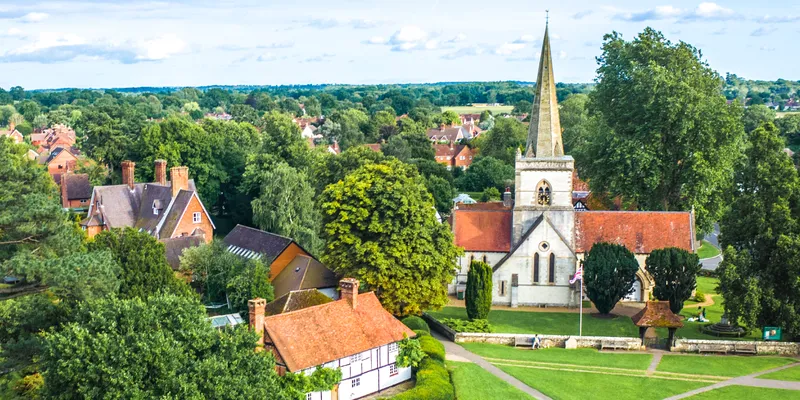
The sprawling village green creates the perfect community space in busy Brockham.
Located between Dorking and Reigate, the village derives its name from ‘Brook Ham’. A small hamlet on the Mole River in the past, the bustling village is now home to a picturesque 19th century church, a store, café, two pubs, and a sprawling village green where a Victorian Fair is held every summer.
The waterway creates a scenic sight, complete with an enchanting footbridge that alongside views of Box Hill, and offers plentiful walking opportunities. The village is best known for the Brockham Bonfire, held in the first weekend of November, and one of the biggest bonfire celebrations in the UK. Celebrations centre on the building of a bonfire, firework display, a torchlight procession, and pig roast. An effigy of Guy Fawkes, which has grown in stature from a life-like figure to a 12-foot giant, takes centre stage.
Chiddingfold

Centred on the village green and large pond, Chiddingfold is an enchanting village.
Close to the Surrey-Sussex border, Chiddingfold is a lovely village that showcases timber-framed Wealden houses, quaint cottages, a church, a forge, and a pond, all surrounded by spectacular countryside.
Between the 14th and 17th centuries, Chiddingfold was a centre for glass-making, with as many as 11 glassworks on the village green. Glass from the village made its way in the 1350s to St Stephen's Chapel, Westminster, and St George's Chapel, Windsor.
Not to be missed is the Crown Inn, one of the oldest inns in England and built as a rest house for Cistercian monks on a pilgrimage from Winchester to the shrine of Thomas Becket in Canterbury. The 14th-century building reeks of history, with massive oak beams, sloping floors, creaking floorboards, an ancient fireplace, gorgeous stained-glass windows, and vintage furniture.
The Chiddingfold Forest, a Site of Special Scientific Interest, is spread over 540 hectares, and comprises a range of habitats, including ancient woodland and conifer plantations. The village, like all small English settlements, is known for its big community spirit.
Edited by Megha Reddy






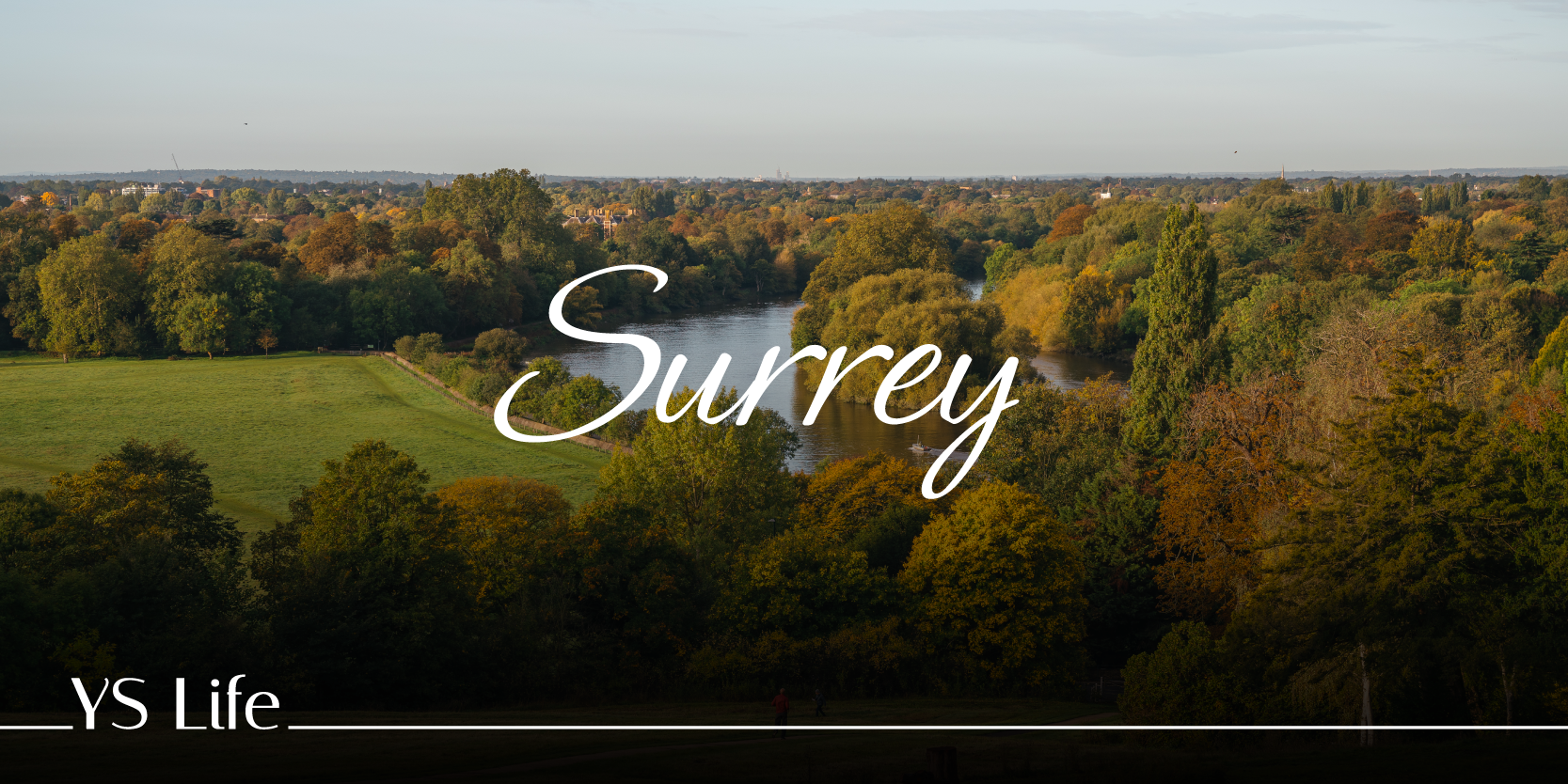

![[Funding alert] Locus raises $50M Series C funding led by GIC](https://images.yourstory.com/cs/2/b094ec506da611eab285b7ee8106293d/nishith-1614753097789.jpg)


